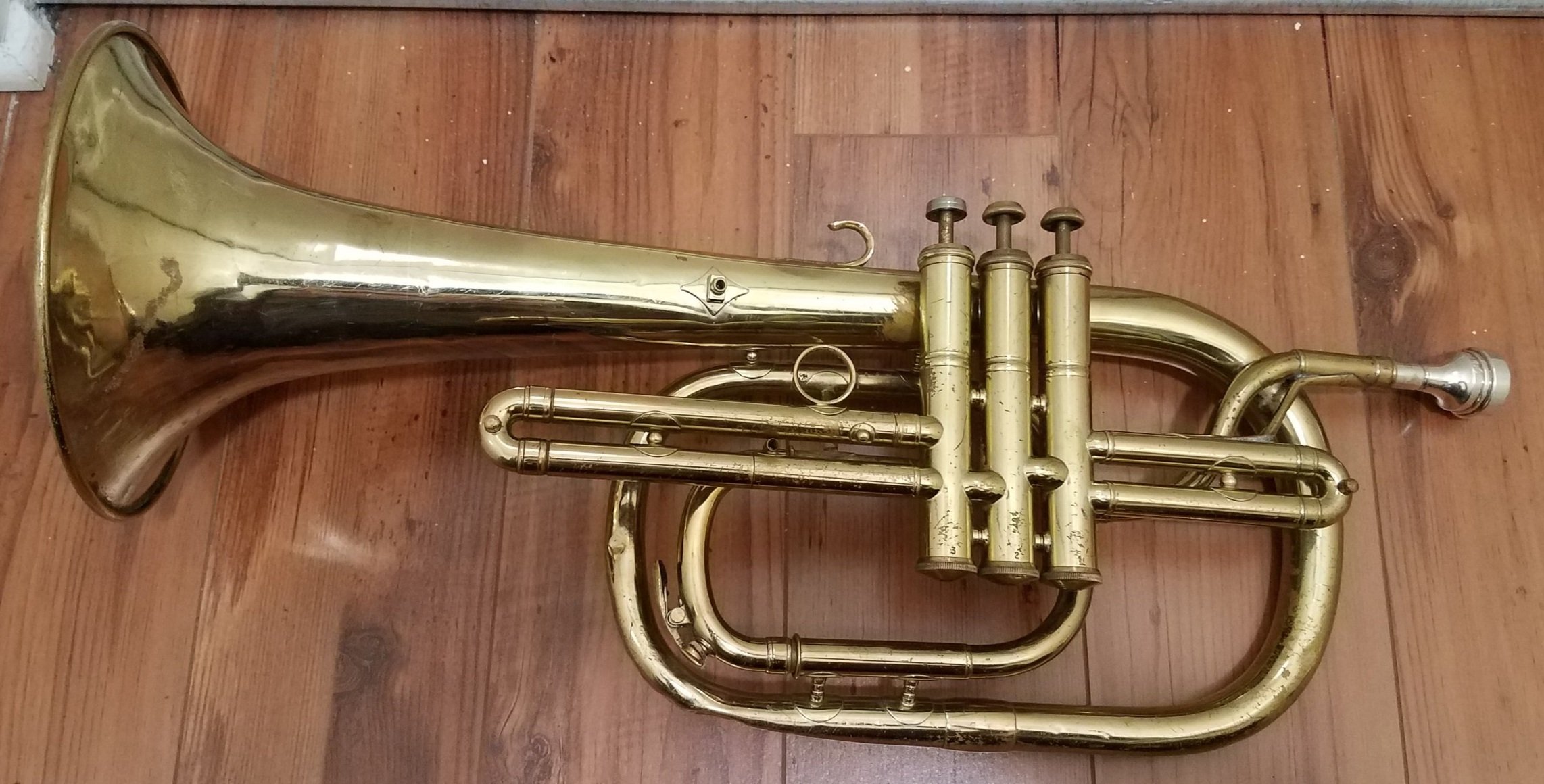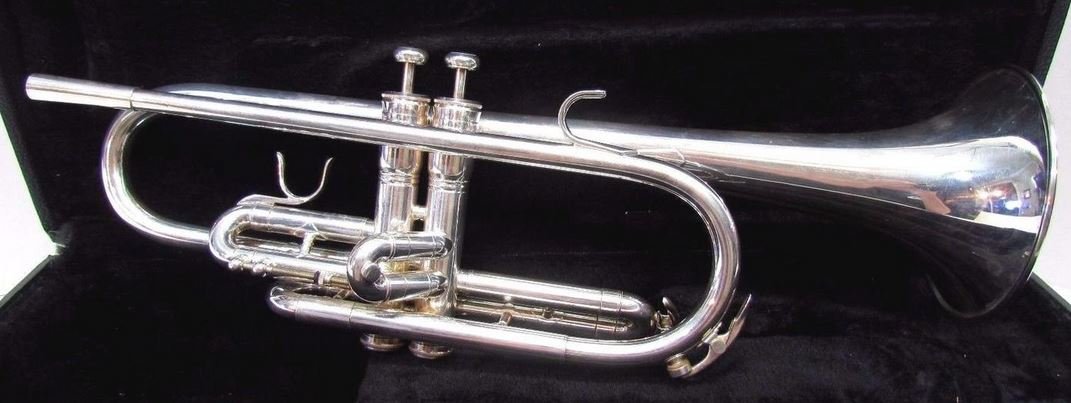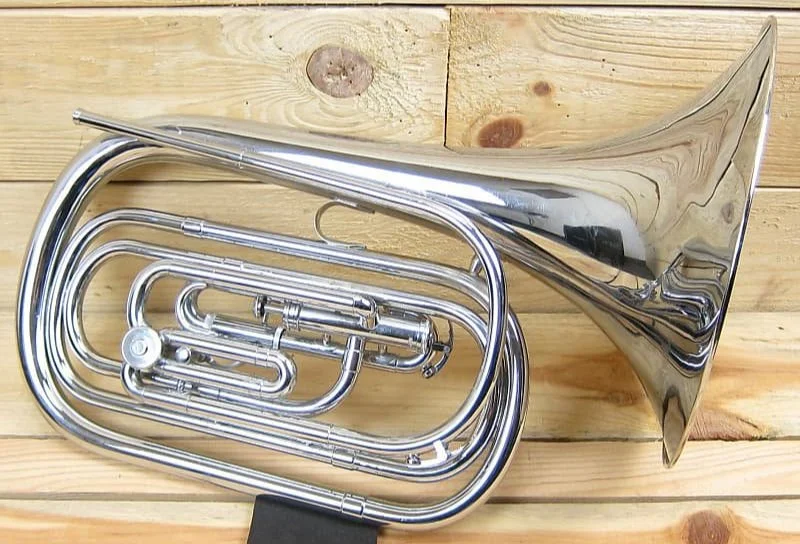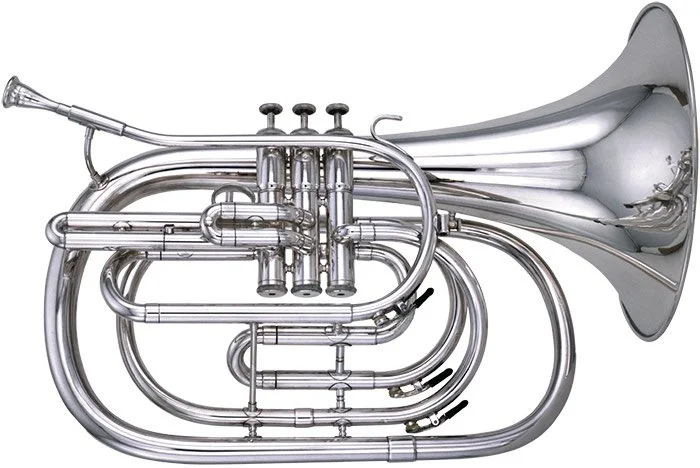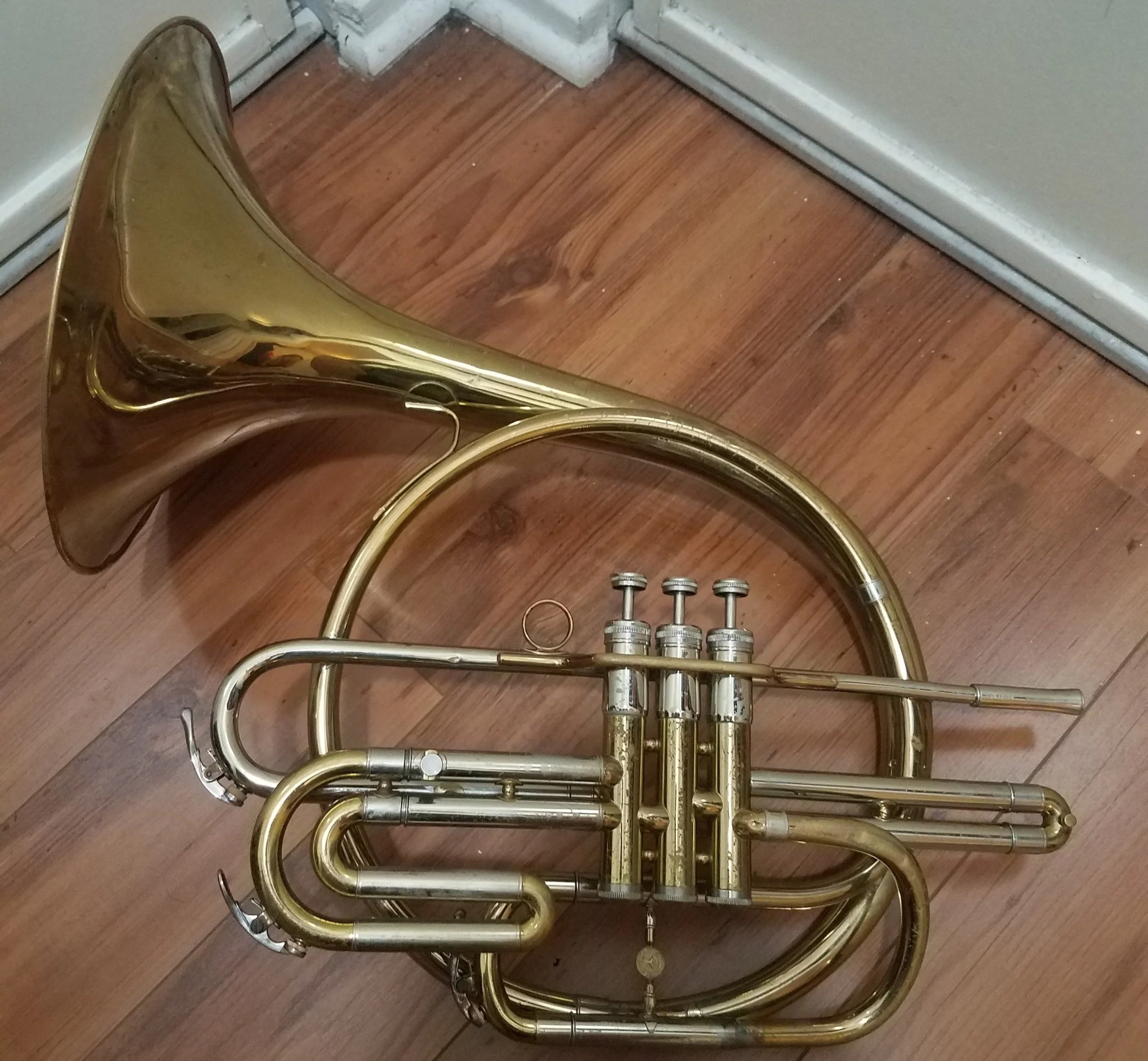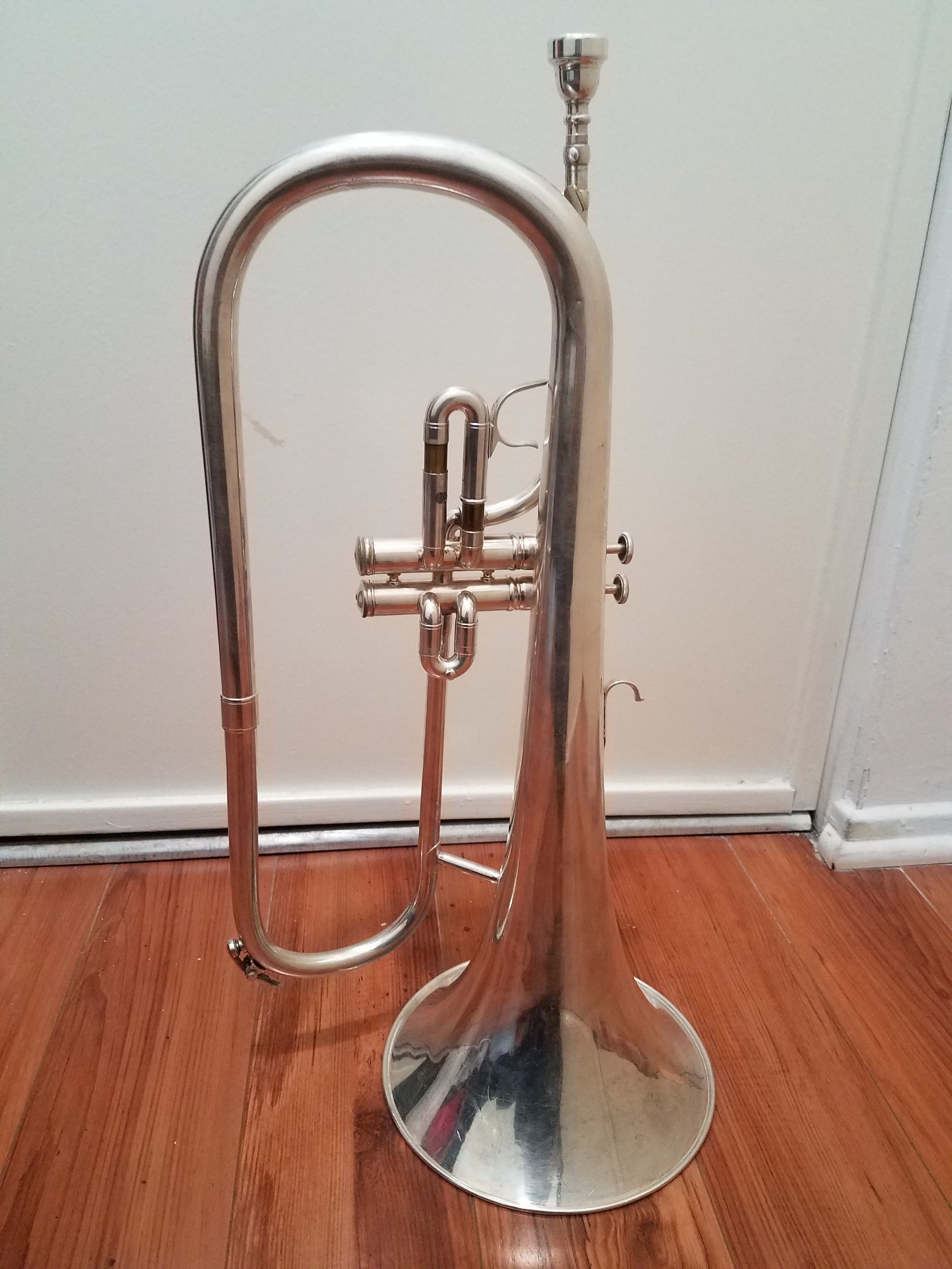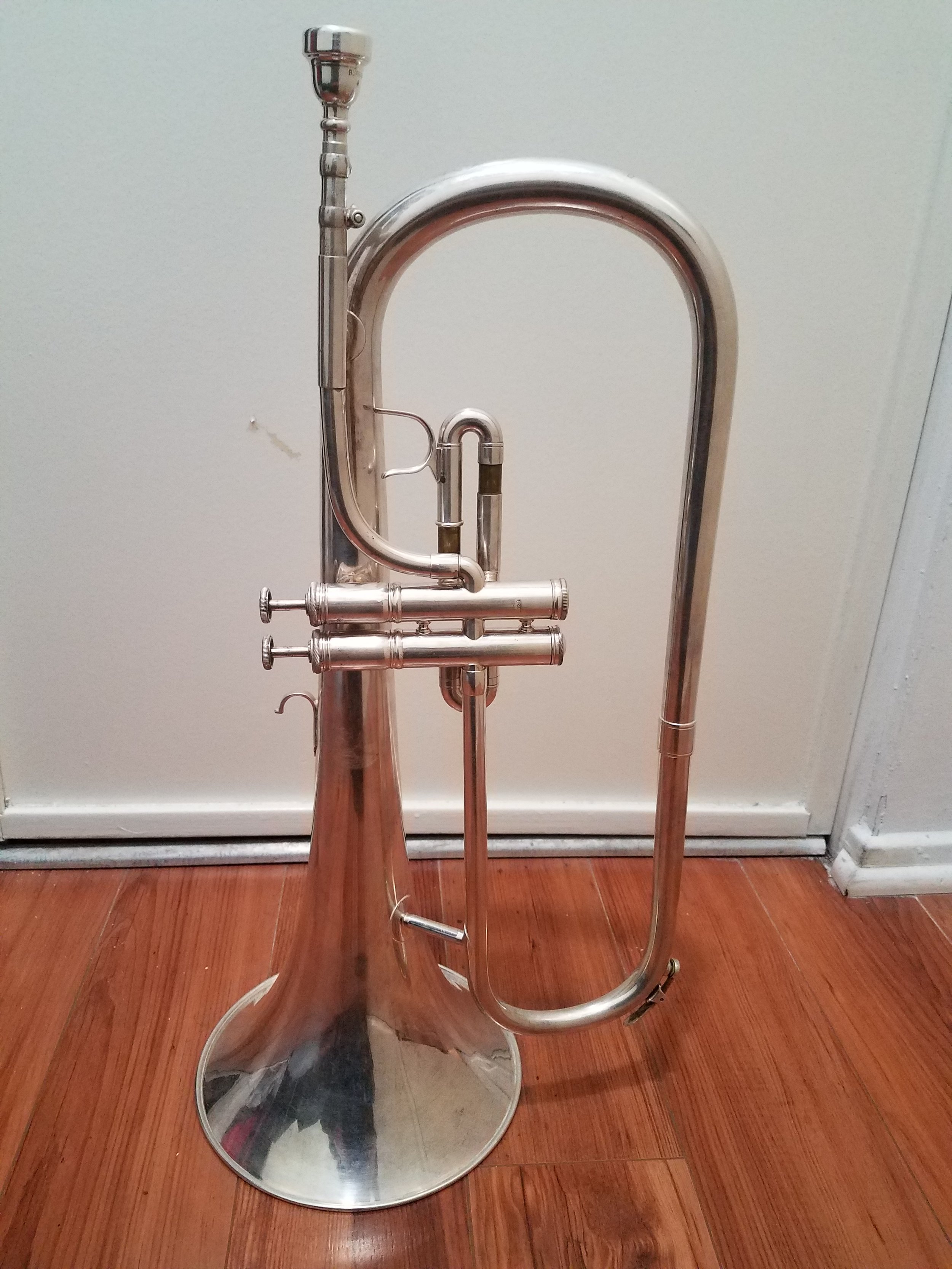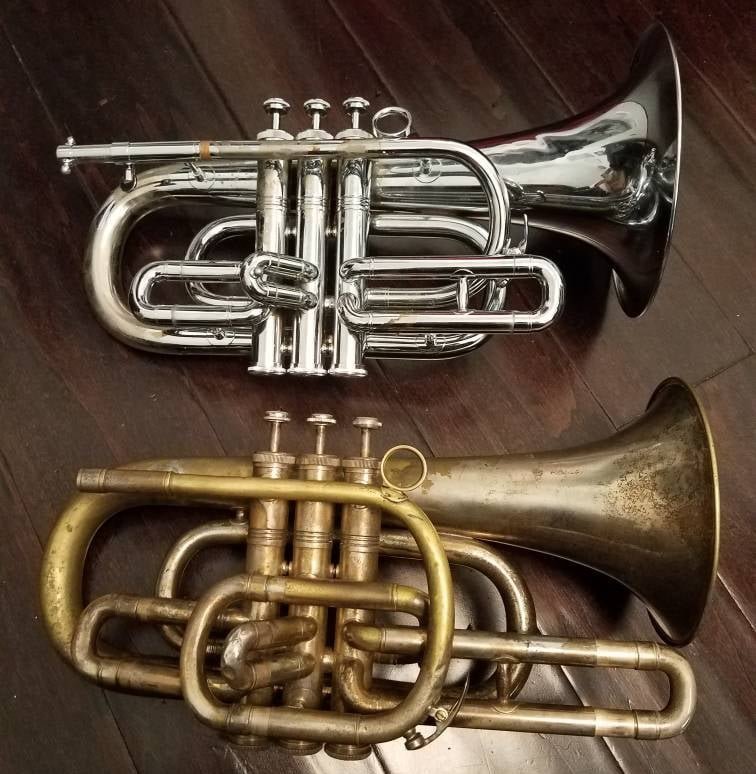Alto Flugelhorn
There are alto trumpets, alto cornets, alto bugles, and of course alto horns, along with many other alto-voice brass instruments that have more interesting names. But what about an alto flugelhorn? This would be an instrument a 4th or 5th below the standard flugelhorn, still with a flugelhorn bore profile. This instrument does exist, but it’s not very common. It’s even rarer than alto trumpet or alto cornet, but it seems to bring more to the table than either of those do.
Here’s my alto flugelhorn - an “Elkhart”-stenciled Couesnon alto flugelhorn in F or E-flat:
This instrument has a gorgeous low flugelhorn sound that matches my Couesnon flugelhorn very well. In my opinion the sound is so purely flugelhorn that if someone heard an audio sample without knowing what instrument was playing, I’m guessing most brass players would immediately guess a 4-valve flugelhorn or maybe some other kind of flugelhorn. It does have a subtle hint of euphonium to the sound as well.
This alto flugelhorn plays just as well as my fabulous pre-WWI Couesnon flugelhorn, and in terms of pure objective ease of play it may be the best bell-front valved brass instrument in alto F that I’ve tried yet. It’s wonderful and addicting to play, and the sound is creamy smooth.
Couesnon alto flugelhorn (left), Couesnon flugelhorn (right)
These Couesnon alto flugels used to grow on trees on eBay, but in the past decade or so they sort of disappeared. I was surprised when this one showed up recently, and this time I didn’t let it pass me by.
Sadly, I don’t still own my DEG 1220 alto cornet to directly compare the two, but this alto flugelhorn sounds VERY different than the DEG ever did. It has that velvety flugelhorn darkness that the alto cornet just didn’t have, much more like the Dynasty III alto bugle in G (which is essentially an extra-large G flugelhorn).
Here’s a quick back-to-back comparison I did of the flugel and alto flugel. Hopefully, despite the phone microphone, you can hear the subtleties in each instrument’s sound.
Lastly, here are some photos of other types of alto flugelhorn out there. Most are in E-flat, which makes sense as the even rarer soprano flugelhorn is also in E-flat.
Taylor “Phatter Boy” in E-flat, referred to by the maker as a tenor flugelhorn
1937 Selmer Paris alto flugelhorn, key unknown (probably E-flat as pictured, with an alternate F slide)
Jules de Vere & Co. alto flugelhorn in E-flat
Henry Distin rotary alto flugelhorn in F, restored and photographed by Robb Stewart
Leo Mitsching rotary alto flugelhorn in E-flat
